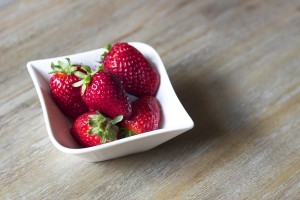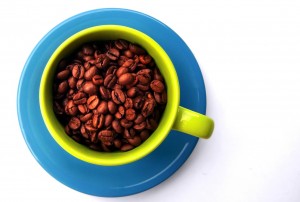You may think that ingredients are ingredients and a recipe is a recipe, and as long as those stay the same the taste of the end product will remain the same. However, that is not necessarily the case. As it turns out, the way we taste food actually goes beyond just its flavor. All of our senses can influence the way we perceive taste. In a New Yorker article, multisensory integration psychologist, Charles Spence, suggests that, “in most cases at least half of our experience of food and drink is determined by the forgotten flavor senses of vision, sound, and touch.”
Generally speaking, if you drink the exact same coffee, in the exact same place, from the exact same mug every day, and all conditions surrounding it are constant, then the coffee should taste the same to you each time. But if you  change any one of those elements, it may cause your brain to perceive the taste of the coffee differently. One article entitled “The color of your coffee mug can change the way your coffee tastes” uses color as an example to suggest that “One explanation is that we never see colors by themselves; instead, we see them in reference to other colors.” A red strawberry appears even redder when served in a white dish than it does in a darker colored dish. We then continue to make associations with that color. We might expect that extra red strawberry to be extra sweet, since red fruits often are riper than green fruits, and that can make us perceive it to taste sweeter than maybe it actually is. Or that color may be tied to certain past experiences, which makes us predict what the new taste experience will be like.
change any one of those elements, it may cause your brain to perceive the taste of the coffee differently. One article entitled “The color of your coffee mug can change the way your coffee tastes” uses color as an example to suggest that “One explanation is that we never see colors by themselves; instead, we see them in reference to other colors.” A red strawberry appears even redder when served in a white dish than it does in a darker colored dish. We then continue to make associations with that color. We might expect that extra red strawberry to be extra sweet, since red fruits often are riper than green fruits, and that can make us perceive it to taste sweeter than maybe it actually is. Or that color may be tied to certain past experiences, which makes us predict what the new taste experience will be like.
Numerous studies have been done on the subject and it turns out that it can be valuable information for companies and restaurants to consider when developing or selling products. A change in shape, texture, color, presentation, packaging, environment, even the crockery and cutlery used can make a difference. A few years ago, Coca-Cola experienced this the hard way when they changed their classic red Coca-Cola can to white with polar bears for the holidays. There was an uproar among classic Coke fans, falsely claiming that the company had changed their long standing formula and that it didn’t taste as good, according to a recent Adweek article. It could have been that the white can reminded consumers of the similarly colored silver Diet Coke can causing them to associate the soda’s taste with the taste of its diet version, though we may never know for sure.
What we do know is that the way a product or meal is presented matters in order for customers to have the best experience. For restaurants, this includes the dishes food is served on as well as how it’s arranged, which also relates to quality. Neatly plated or artistically plated meals signify that a lot of effort has been spent on preparing the dish. Many people associate that with good quality, and therefore the expectation of good taste. It’s not to say that a burger and fries served in a plastic basket instead of on a white plate can’t taste good, but people will subconsciously expect different things under different conditions. There are countless variables that can affect perception, so while we can generalize, it isn’t always the easiest to pinpoint the exact reason for a change in taste. However, it is something that can be experimented with and you may be surprised with the turnout. Have you tried incorporating all of the senses into your food presentations? What changes have you noticed?




